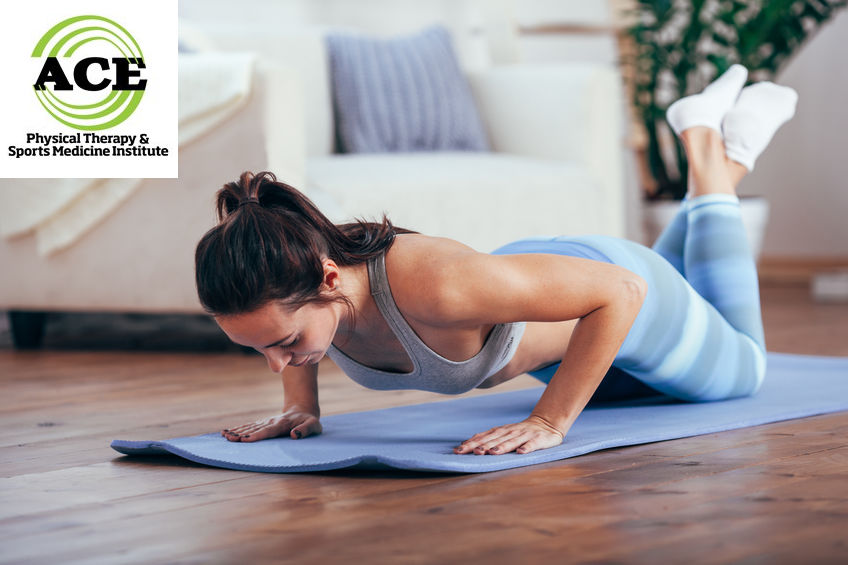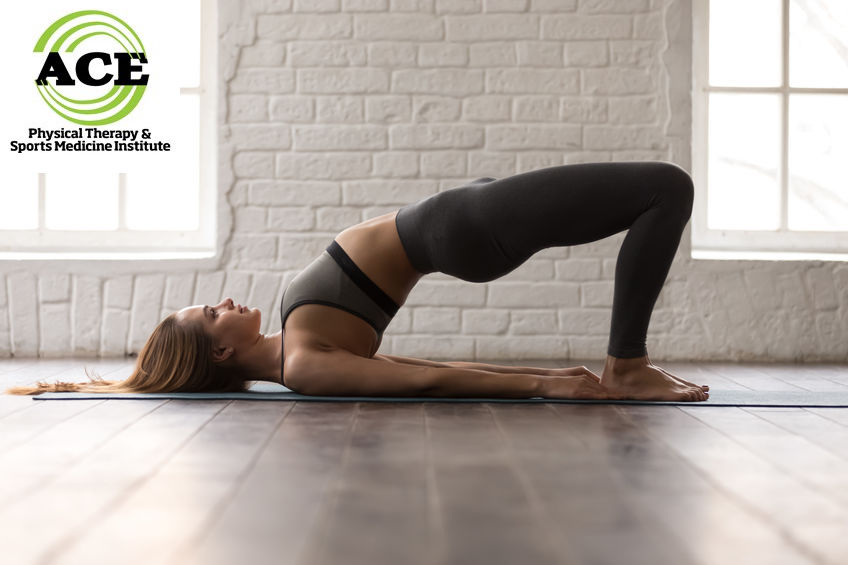EASY AT-HOME EXERCISES

Tid Bits of Info
- It is recommended to walk 10,000 steps per day.
- Walking faster and longer burns more calories. The heavier you are the more calories you burn when you walk.
- Pushups exercise and strengthen almost every muscle from the waist up to the head.
- Stretching after you perform other exercises has been shown to be more effective.
- Seek the advice and treatment of a Physical Therapist if you need help with these exercises.
The country is slowing opening up, and gyms and fitness centers are also beginning to re-open. Unfortunately, not everyone will return. Due to the ongoing COVID-19 situation, some people may be under orders to remain at home. Others have altered habits during the isolation period and may not return to the gym. At-home exercises offer a way to remain fit without going to the gym. The following exercises are simple and cover the major body parts that are most prone to injury or feeling pain when one is sedentary for too long.
Cardiovascular exercise is one of the most important aspects of any exercise routine. Good heart health is essential for day to day activities and a well-balanced life. One of the simplest forms of cardiovascular exercise is walking. Any cardiovascular exercise program should be performed a minimum of 3x/week for 30 minutes. The ideal program would be one that is performed 5-7 days per week for a minimum of 30 minutes.
Heart rate is important when examining the effectiveness of a cardiovascular program. Elevating the heart rate to at least 60% of the maximum is recommended to get the best results. Getting the heart rate higher than 60% without running for an extended period of time is very difficult. One simple way to assess your efforts are to walk fast enough that causes you to breath hard enough that makes talking and holding a conversation (in person or on the phone) difficult. If you are able talk and hold a conversation, you are not walking fast enough. Be sure to wear proper shoes that have a good arch support to help prevent lower extremity and low back injuries.
Simple strength exercises to perform should target the major muscles of the upper and lower extremities. The core musculature will also need attention, but some of the upper and lower extremity exercises can be performed in a way that helps to “engage” the core muscles.
Push-ups: This exercise is one that can be modified in various ways to make it possible for anyone to perform it. The biggest challenge for most people is to have enough strength to push their body weight back up once it is lowered to the floor. The simplest modification is to perform this exercise while standing up. Lean against a wall or countertop and begin. As you get stronger, get down on the floor and remain on your knees. Progress your routine to perform a push up from a “standard” position when you are strong enough to do it.
Bridge: This exercise can engage nearly every muscle in the core and lower extremities. Lie on the floor with your feet flat and knee bent. Think about “tightening or contracting” your stomach and buttocks muscles and raise your buttocks off of the floor. Pause and hold steady for 5 seconds. Lower your buttocks back to the floor and repeat at least 15 times.

Squats: One of the most important and functional exercises that anyone can perform. Using good form will ensure that you perform it without suffering an injury to your back or knees. Stand with your feet flat on the floor about shoulder width apart and the toes slightly turned out. Keep your abdominals tight and your back in a neutral position. Slowly begin bending your knees until your thigh is parallel to the floor (as if you were sitting in a chair). Be sure to keep your kneecap from going in front of your toes as that will cause increased stress on the knee joint. You should be able to place the calf muscles against a sturdy (won’t move) chair or couch and lower your buttocks to the seat without the calf muscles moving away from the piece of furniture. Don’t sit down, but barely touch your buttocks to the piece of furniture and rise back to the starting positon.
Doorway stretch: So many people were caught off guard when they were told to work from home. Most home work stations are not designed well and they can lead to poor posture and tight muscles. Sitting hunched over a computer or laptop is one of the most common causes of shoulder and neck pain. One simple stretch to help combat the effects of poor posture is this stretch. Stand in a doorway and place your palms on the door jamb where the hands are approximately at head level or higher. Lean into and through the door opening and you should feel a good stretch in your chest and the front of the shoulders.
Open book stretch: This stretch can loosen hip and spine muscles and joints. Begin side lying with your hips flexed to 90 degrees. Place your opposite hand on the top knee. The same side arm of the top knee remains fully extended or straight at the elbow. Slowly rotate your body backwards with your free, same side hand leading the way. Be sure to rotate your head/neck to keep your eyes on your moving hand. When you turn your head to “follow” your hand it enables the entire spine to rotate more easily. Stop when you feel a stretch in the hip, low and mid back.
These exercises are designed to help you get through the remainder of these crazy times without experiencing an injury or developing pain from poor posture while you work from home. They are easily modified to make them more difficult or easier. If you need to discuss these exercises with a healthcare professional, contact a Physical Therapist.
























